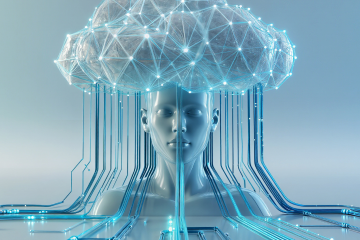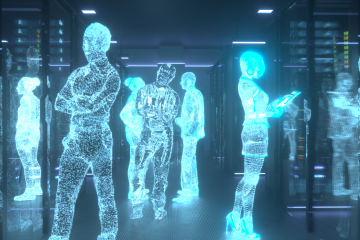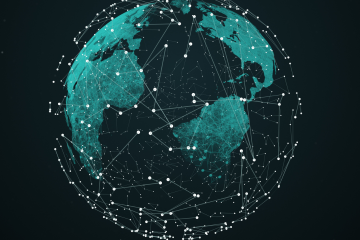
Employee training is one of the most common rituals known to the individual in this day and age. Workers from all backgrounds universally experience this ritual, making it one of the most commonly shared experiences.
It is in employee training where the individual becomes absorbed into the company, the role, the nature of the work itself. As an experience, there has always been a certain element of identity transformation to it, no? One’s individual identity becomes kin to, perhaps even melted into, the designated role.
As the cog of self is whittled to fit into a certain organizations’ machine, the tools of this whittling are manifold.
There are the “Welcome aboard!” packets that cover everything from code of conduct to paid holidays.
More recently, there is artificial intelligence. Specifically, there is the subdiscipline of A.I. called machine learning (ML), which enables A.I. agents to autonomously improve without human intervention.
Employee Learning Boosted By Machine Learning
What can A.I. do for employee training?
Think of the process of employee training.
One aspect of the process is that the employee is provided with information that is relevant for the role.
Think of a pharmaceutical sales rep being taught the do’s and don’ts of how to speak and act within the office of a doctor.
Another aspect of the process is testing that the employee will be doing a fine job. Think of monitoring the sales rep during meetings with actual doctors.
Alternatively, having the sales rep perform mock-meetings with actors pretending to be doctors. The sales rep must perform as the sales rep would in the actual circumstances mocked up.
Before, human judges helped determine the employee’s fitness for employment in the role.
But with A.I., the process will become much more data-centric.
Firmness of handshake measured and qualified. Timbre of pitching voice compared with those of successful pitching voices and those of failing pitching voices to place employee’s pitching voice on scale of timbre. Transcripts of recorded pitches searched for occurrences of words identified as pertinent to the pitch, the frequency of usage scrutinized.
These analyses can be run by artificial intelligence to help modify an employee-in-training’s understanding of what makes a good sales pitch and what does not.
The future of employee training in all industries will involve A.I.’s collection and processing of data related to particular roles. Automated analyses of employee performance will lead to predictions about how to improve said performance.
Through machine learning, A.I. can autonomously improve its role in the employee training process, creating better predictions and recommendations about how employees can better fit into their role.
A Deeper Look at Machine Learning’s Role in Employee Training
Machine learning is so attractive in the field of technology because ML algorithms enable machines to improve themselves basically on their own. It is a technology that brings us products (i.e., A.I. algorithms) that become better the way a human can become better at, say, number-crunching during a sales pitch by dedicating a little time every day to it.
An A.I. product could be an A.I. agent serving as a math tutor assigned to help a sales rep improve their on-the-fly math skills. Machine learning A.I. will offer and find insights into computation much quicker than a human could.
A Real World Look at Machine Learning
For instance, a human math tutor contemplating the nature of computation within the standard number system will be able to see certain patterns arise, such as that the place numbers in standard computations always contain a number between 0 through 9, and that if you think about the relationships between the numbers between 0 through 9, you will see that, for any two given numbers within this set, the absolute value of both their sum or difference will always be the same. For instance, presuming there is no “carry over quantity” as in addition or “borrow from” quantity as in subtraction, 5 and 9 will always yield an absolute value of 4 in a place in question.
Machine learning can much more quickly arrive an A.I. agent at this insight. Just give the A.I. agent a large data set of works on number theory and assign it the task of divining special characteristics within data sets, and you will get you a good result. What is more, A.I. can readily communicate its findings, perhaps in clearer language than a human can.
As a result, an A.I. employee training algorithm that is like a math-tutor chatbot will help sales reps see more clearly how to create shortcuts for arithmetic. In other words, a self-improving algorithm helps a human improve and implement algorithms that exist within the human’s head.





